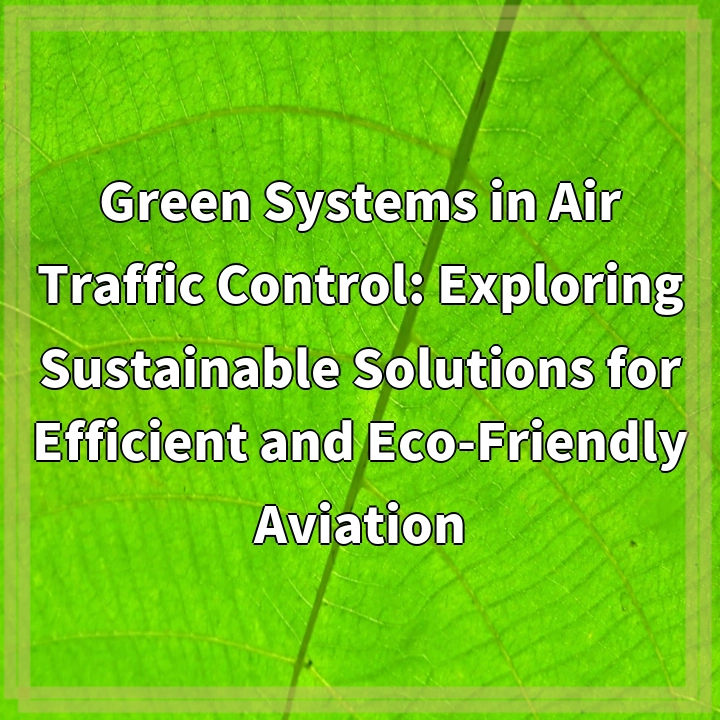
What it is:
Green systems in air traffic control refer to the implementation of sustainable solutions and practices in the aviation industry. These systems aim to improve the efficiency and environmental friendliness of air traffic control operations by reducing energy consumption, minimizing emissions, and optimizing overall resource management.
Real-world problems:
The aviation industry is facing numerous challenges in terms of environmental impact and sustainability. Some of the key real-world problems associated with green systems in air traffic control include:
1. Carbon Emissions:
Aircraft are major contributors to carbon dioxide and greenhouse gas emissions. Air traffic control systems need to address this issue by adopting eco-friendly practices, such as optimizing flight routes and altitudes to minimize fuel consumption and emissions.
2. Noise Pollution:
The noise generated by aircraft during takeoff and landing can have a significant impact on nearby communities. Green systems in air traffic control can help in mitigating noise pollution by implementing noise abatement procedures and routing aircraft away from densely populated areas.
3. Energy Consumption:
Air traffic control facilities require substantial amounts of energy to operate various systems and equipment. Implementing energy-efficient technologies and practices, such as using renewable energy sources and optimizing energy usage, can help reduce the industry’s overall energy consumption.
4. Waste Management:
The aviation industry generates a significant amount of waste, including packaging materials and hazardous substances. Green systems in air traffic control must prioritize proper waste management strategies, such as recycling, to minimize the environmental impact and promote a more sustainable approach.
In the next sections, we will delve deeper into exploring the sustainable solutions that are being implemented in air traffic control and examine real-world case studies or examples showcasing the effectiveness of these initiatives.

Summary of Green Systems in Air Traffic Control:
Green systems in air traffic control are designed to address the environmental impact of the aviation industry by implementing sustainable solutions. These solutions aim to improve efficiency and reduce emissions, while also addressing issues such as noise pollution, energy consumption, and waste management. By optimizing flight routes, using renewable energy sources, and implementing noise abatement procedures, air traffic control can contribute to a more eco-friendly and efficient aviation industry.
Solutions:
Some key solutions that can be implemented in green systems for air traffic control include:
1. Flight Route Optimization:
By utilizing advanced technologies and data analysis, air traffic control can optimize flight routes to reduce fuel consumption and emissions. This involves efficient route planning, altitude optimization, and identifying more direct flight paths.
2. Renewable Energy Integration:
Air traffic control facilities can transition to using renewable energy sources, such as solar or wind power. This reduces reliance on fossil fuels and contributes to a greener infrastructure for air traffic control operations.
3. Noise Abatement Procedures:
Air traffic control can implement noise abatement procedures to minimize the impact of aircraft noise on surrounding communities. This includes routing aircraft away from populated areas, using noise-reducing technologies, and adhering to strict noise management regulations.
4. Energy Efficiency Measures:
Implementing energy-efficient technologies and practices within air traffic control facilities can significantly reduce energy consumption. This includes using energy-efficient lighting, optimizing HVAC systems, and adopting smart building management systems.
5. Sustainable Waste Management:
Air traffic control should prioritize sustainable waste management practices. This involves recycling materials, reducing single-use plastics, and properly disposing of hazardous waste, promoting a more sustainable approach within the aviation industry.
By implementing these solutions, air traffic control systems can contribute to a more efficient, eco-friendly, and sustainable aviation industry.















